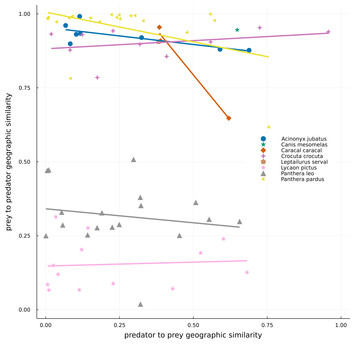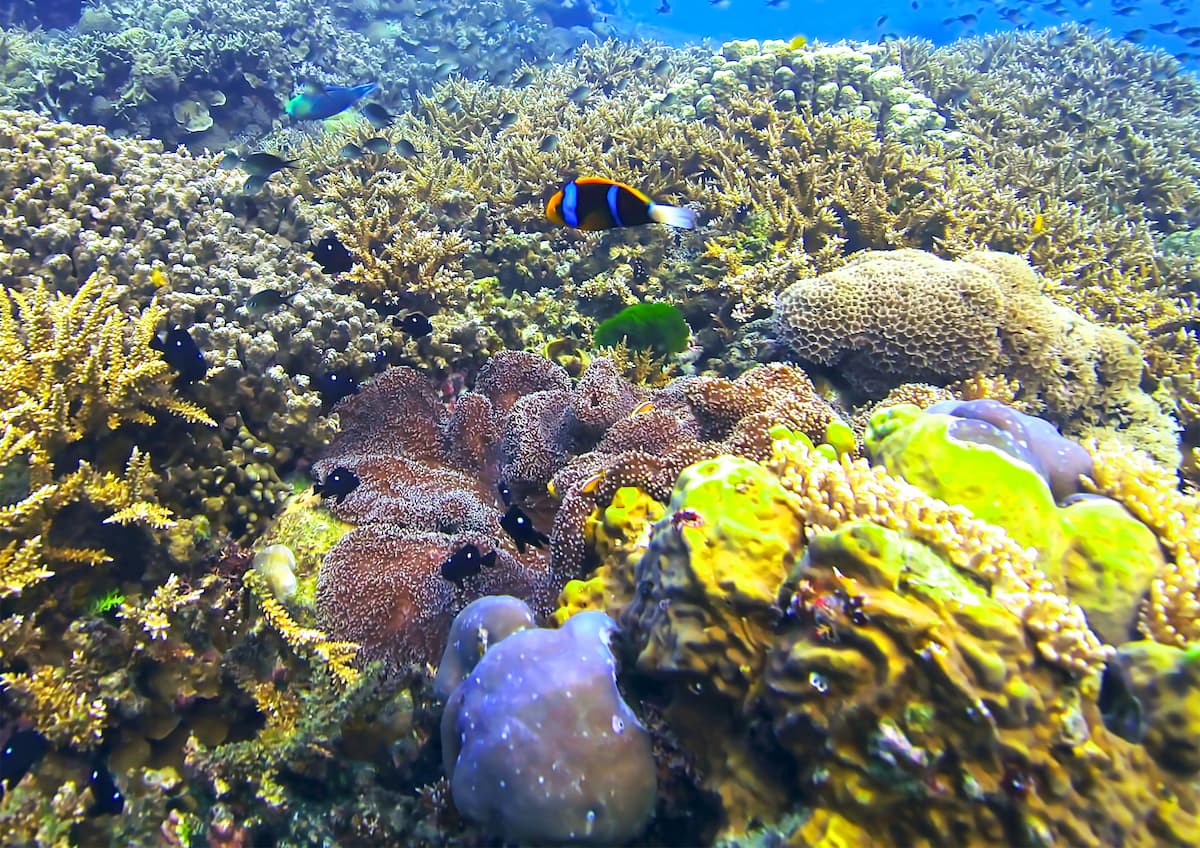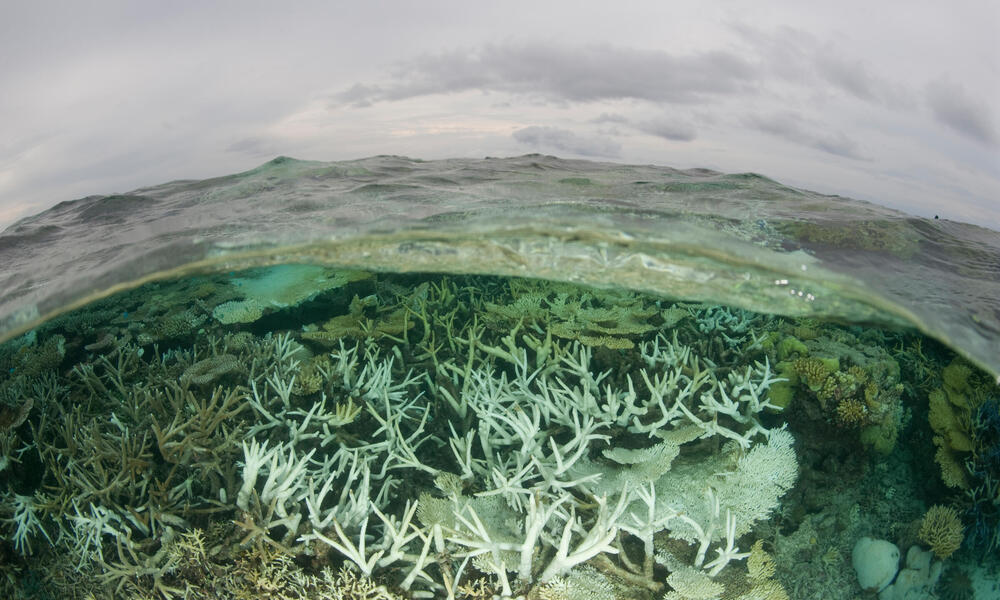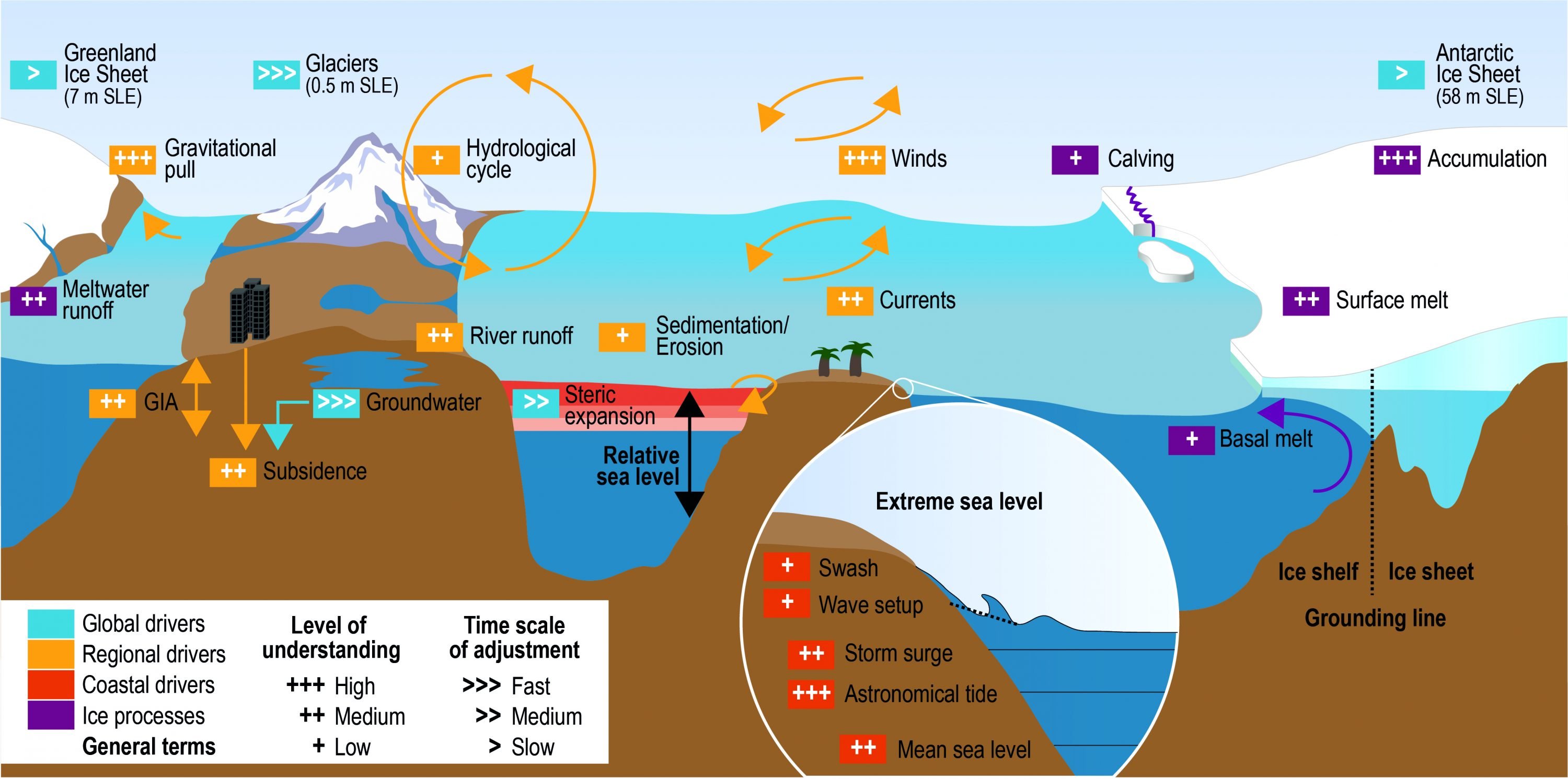Report on the Societal Impacts of Marine Biodiversity Change and Alignment with Sustainable Development Goals
Executive Summary
A quantitative assessment of expert opinion reveals that changes in marine biodiversity most significantly impact non-material Nature’s Contributions to People (NCPs), such as cultural identity, learning, and psychological well-being. This finding, derived from studies in the Wadden Sea and South Africa’s Algoa Bay, highlights a critical mismatch between stakeholder-perceived impacts and current conservation policies, which prioritize material and regulating services. This policy gap undermines progress towards several Sustainable Development Goals (SDGs), particularly SDG 14 (Life Below Water), SDG 3 (Good Health and Well-being), and SDG 10 (Reduced Inequalities). The report calls for a paradigm shift in conservation management to integrate relational values and employ inclusive knowledge co-production, thereby creating more effective, equitable, and sustainable strategies that advance the 2030 Agenda.
1. Introduction: Linking Biodiversity to Sustainable Development
Understanding the consequences of marine biodiversity change for human society is fundamental to achieving the Sustainable Development Goals. While the ocean’s role in providing material goods (e.g., food) and regulating climate is well-recognized, its contributions to non-material aspects of human life are often overlooked in policy. This study addresses this gap by quantitatively evaluating the links between changes in Essential Biodiversity Variables (EBVs) and their impacts on the full spectrum of NCPs, including material, regulating, and non-material categories. By focusing on the human-nature relationship, this report directly informs strategies for SDG 14 (Life Below Water) and SDG 15 (Life on Land), while also highlighting profound implications for SDG 3 (Good Health and Well-being), SDG 10 (Reduced Inequalities), and SDG 16 (Peace, Justice and Strong Institutions).
2. Methodology
The analysis is based on a survey of biodiversity experts, managers, and conservation practitioners from two ecologically significant coastal regions: the Wadden Sea (Germany, Denmark, Netherlands) and Algoa Bay (South Africa).
- Expert Elicitation: A survey was administered to 40 experts with in-depth knowledge of regional marine biodiversity, including scientists, park rangers, and conservation managers.
- Frameworks Used:
- Essential Biodiversity Variables (EBVs): To structure the assessment of biodiversity change, EBVs were grouped into three classes: species population, species traits and functions, and biomass and abundance.
- Nature’s Contributions to People (NCPs): To capture the societal impacts, NCPs were categorized as regulating, material, and non-material.
- Data Analysis: A generalised least squares (GLS) model was used to analyze expert weightings on the significance of biodiversity change impacts across different EBV and NCP categories. This approach provides a quantitative basis for policy prioritization.
3. Key Findings: A Disconnect Between Perceived Impacts and Policy Focus
3.1. Primacy of Non-Material Impacts
Expert opinion indicates that changes in marine biodiversity have a statistically significant and higher impact on non-material NCPs compared to regulating and material NCPs. This trend was consistent across all assessed EBV classes (species population, traits, and abundance).
- Experiences: The most significant impacts were perceived on human experiences, including recreation, aesthetic enjoyment, and healing, which are crucial for SDG 3 (Good Health and Well-being).
- Learning and Inspiration: The capacity of nature to provide educational and inspirational value was also rated as highly impacted. This connects to SDG 4 (Quality Education) through environmental awareness.
- Cultural Identities: Impacts on cultural identity, spiritual values, and social cohesion were deemed significant, underscoring the role of biodiversity in maintaining the cultural fabric of coastal communities, a key aspect of SDG 11 (Sustainable Cities and Communities).
3.2. The Policy and Research Mismatch
The study reveals a stark contrast between the perceived importance of non-material NCPs and their consideration in conservation policy and research. Current strategies predominantly focus on instrumental values (e.g., fisheries, carbon sequestration) at the expense of relational values (e.g., sense of place, cultural identity). This omission creates trade-offs where the pursuit of material gains can degrade the very aspects of nature most valued by local communities, hindering holistic progress on SDG 14.
4. Implications for Conservation Management and the SDGs
4.1. Inequitable Outcomes and Social Injustice (SDG 10 & SDG 16)
Conservation strategies that ignore non-material values risk perpetuating social injustices. The nature-culture dichotomy embedded in many policies, such as the establishment of some Marine Protected Areas (MPAs), can lead to the exclusion of local and Indigenous communities.
- In Algoa Bay, conservation measures have restricted access to sacred heritage sites and traditional fishing grounds, exacerbating social inequalities rooted in historical injustices. This directly contravenes the aims of SDG 10 (Reduced Inequalities).
- In the Wadden Sea, resistance from local residents towards top-down park management highlights a failure to build the inclusive and participatory institutions required by SDG 16 (Peace, Justice and Strong Institutions).
4.2. The Need for Knowledge Co-Production and Partnerships (SDG 17)
Addressing this policy mismatch requires a fundamental shift towards more inclusive and participatory conservation models. The findings strongly advocate for knowledge co-production, which involves genuine partnership between scientists, policymakers, and diverse community stakeholders, including Indigenous groups, women, and youth.
- Integrating Diverse Knowledge: Proper co-production respects and integrates Indigenous and local knowledge systems as distinct and valid, rather than merely translating them into dominant scientific frameworks.
- Building Trust and Equity: This approach helps overcome historical distrust in research and ensures that conservation is mutually beneficial, empowering communities and fostering self-determination.
- Strengthening Interdisciplinary Collaboration: It necessitates a greater role for the social sciences to understand the complex human dimensions of ocean management, embodying the collaborative spirit of SDG 17 (Partnerships for the Goals).
5. Conclusion and Recommendations for SDG-Aligned Conservation
This study quantitatively demonstrates that the relational values people derive from the ocean are highly vulnerable to marine biodiversity change. Current conservation policies are inadequately addressing these impacts, thereby failing to protect overall human well-being and potentially creating social inequity. To align marine conservation with the 2030 Agenda, a paradigm shift is required.
Recommendations:
- Integrate Relational Values into Policy: Conservation and marine spatial planning must explicitly recognize and incorporate non-material NCPs. This requires moving beyond purely economic or instrumental valuations to embrace a plurality of values, directly supporting SDG 3, SDG 11, and a more holistic interpretation of SDG 14.
- Adopt Inclusive Knowledge Co-Production: Implement participatory and community-based research as a standard for conservation planning. This ensures that management strategies are socially just, culturally relevant, and effective, advancing SDG 10 and SDG 16.
- Empower the Social Sciences: Elevate the role of critical social sciences in interdisciplinary marine research and policymaking. Their expertise is crucial for navigating power dynamics, understanding socio-cultural contexts, and designing equitable conservation outcomes.
- Develop and Apply New Assessment Methods: Support the development of participatory methods (e.g., mapping, arts-based interventions) to better capture and integrate intangible cultural and emotional values into decision-making processes, fostering the partnerships needed for SDG 17.
Analysis of Sustainable Development Goals in the Article
1. Which SDGs are addressed or connected to the issues highlighted in the article?
The article addresses several Sustainable Development Goals (SDGs) by focusing on the intersection of marine biodiversity, human well-being, and policy-making. The following SDGs are relevant:
- SDG 14: Life Below Water: This is the most central SDG, as the article’s core theme is the conservation of marine and coastal biodiversity in the Wadden Sea and Algoa Bay. It directly discusses the impacts of biodiversity change on ecosystems and the need for effective conservation and management strategies.
- SDG 3: Good Health and Well-being: The article connects marine biodiversity to human well-being, particularly through non-material contributions. It highlights the importance of nature for “psychological and physical well-being,” “healing, recreation, and aesthetic enjoyment,” which are integral components of this goal.
- SDG 10: Reduced Inequalities: The article touches upon this goal by discussing how certain conservation measures can create or exacerbate social inequalities. It mentions the exclusion of “Indigenous communities, subsistence fishers, women, and youth” from decision-making processes and access to marine resources, particularly in Algoa Bay, where it is compared to “apartheid-era segregation.”
- SDG 16: Peace, Justice and Strong Institutions: This goal is relevant through the article’s emphasis on the need for more inclusive, participatory, and representative governance in conservation. The text calls for “knowledge co-production involving diverse stakeholders to address power imbalances” and criticizes policy formulation that neglects certain values and communities, advocating for more just and effective institutions.
- SDG 17: Partnerships for the Goals: The article strongly advocates for multi-stakeholder partnerships. It calls for “knowledge co-production” that forms a “partnership” between researchers, communities, policymakers, and NGOs. The study itself is an example of a partnership involving academic institutions from Germany, South Africa, the US, and the UK, aiming to produce actionable knowledge for sustainable management.
2. What specific targets under those SDGs can be identified based on the article’s content?
Based on the article’s discussion, the following specific SDG targets can be identified:
-
Under SDG 14 (Life Below Water):
- Target 14.2: “By 2020, sustainably manage and protect marine and coastal ecosystems to avoid significant adverse impacts, including by strengthening their resilience, and take action for their restoration in order to achieve healthy and productive oceans.” The article directly addresses this by studying the impacts of biodiversity change in the Wadden Sea and Algoa Bay and calling for “effective management approaches for marine biodiversity.”
- Target 14.5: “By 2020, conserve at least 10 per cent of coastal and marine areas, consistent with national and international law and based on the best available scientific information.” The mention of Marine Protected Areas (MPAs) and conservation policies in the study sites (Wadden Sea is a UNESCO World Heritage Site) directly relates to this target.
- Target 14.a: “Increase scientific knowledge, develop research capacity and transfer marine technology… in order to improve ocean health.” The entire study is an effort to increase scientific knowledge by connecting Essential Biodiversity Variables (EBVs) with Nature’s Contributions to People (NCPs) and calls for further research.
- Target 14.b: “Provide access for small-scale artisanal fishers to marine resources and markets.” This target is implicitly addressed when the article discusses the exclusion of “subsistence fishers” from decision-making and access to the ocean due to conservation measures.
-
Under SDG 3 (Good Health and Well-being):
- Target 3.4: “By 2030, reduce by one third premature mortality from non-communicable diseases through prevention and treatment and promote mental health and well-being.” The article’s focus on non-material NCPs like “recreation, spiritual enrichment, aesthetic experiences,” and their role in “psychological and physical well-being” connects directly to the promotion of mental health and well-being.
-
Under SDG 10 (Reduced Inequalities):
- Target 10.2: “By 2030, empower and promote the social, economic and political inclusion of all, irrespective of age, sex, disability, race, ethnicity, origin, religion or economic or other status.” The article highlights the exclusion of Indigenous communities, women, and youth from conservation processes, calling for their inclusion to make conservation “socially just.”
- Target 10.3: “Ensure equal opportunity and reduce inequalities of outcome, including by eliminating discriminatory laws, policies and practices and promoting appropriate legislation, policies and action in this regard.” The text points out how current conservation policies can perpetuate “social injustices” and “power imbalances,” thereby calling for a change in these practices.
-
Under SDG 16 (Peace, Justice and Strong Institutions):
- Target 16.7: “Ensure responsive, inclusive, participatory and representative decision-making at all levels.” The article’s central argument calls for “knowledge co-production involving diverse stakeholders,” “inclusion, representation, and participation in conservation practices,” and moving away from top-down policy-making.
-
Under SDG 17 (Partnerships for the Goals):
- Target 17.16: “Enhance the Global Partnership for Sustainable Development, complemented by multi-stakeholder partnerships that mobilize and share knowledge, expertise, technology and financial resources…” The article advocates for such partnerships, particularly through “knowledge co-production” between scientists and local/Indigenous communities.
- Target 17.17: “Encourage and promote effective public, public-private and civil society partnerships, building on the experience and resourcing strategies of partnerships.” The study itself involves various institutions (NLPVW, SANPARKS, etc.) and calls for collaboration among “scientists, policymakers, and NGOs” to shape conservation.
3. Are there any indicators mentioned or implied in the article that can be used to measure progress towards the identified targets?
The article mentions or implies several indicators that can be used to measure progress:
- Essential Biodiversity Variables (EBVs): The study explicitly uses a modified concept of EBVs, specifically “species population, species traits and functions, and biomass and abundance,” as measurable variables to document and assess biodiversity change. These serve as direct indicators for monitoring the health of marine ecosystems (Target 14.2).
- Assessment of Nature’s Contributions to People (NCPs): The survey’s methodology, which quantifies expert perceptions of the impact of biodiversity change on different NCP categories (material, regulating, non-material), acts as an indicator framework. Specifically, the assessment of non-material NCPs (e.g., “experiences, learning, inspiration, and cultural identities”) provides a way to measure the cultural and well-being benefits (Target 3.4) derived from ecosystems.
- Coverage and Management of Marine Protected Areas (MPAs): The article refers to MPAs and conservation policies in the Wadden Sea and Algoa Bay. The existence and effective management of these areas are implied indicators for progress on Target 14.5. The critique of how they can cause social injustice also implies a need for indicators on their social impact.
- Level of Stakeholder Participation and Inclusion: The article implicitly suggests this as a key indicator. Progress could be measured by the degree to which “Indigenous communities, subsistence fishers, women, and youth” are involved in “decision-making processes” (Targets 10.2 and 16.7). The call for “knowledge co-production” implies that the number and quality of such partnerships are a measure of success (Target 17.17).
- Integration of Diverse Values in Policy: The article highlights a “policy mismatch” where relational and non-material values are neglected. An indicator of progress would be the extent to which these values are explicitly recognized and integrated into conservation strategies and environmental management policies. The study’s finding that non-material NCPs are “least regarded by policy” establishes a baseline against which future policy changes can be measured.
4. Table of SDGs, Targets, and Indicators
| SDGs | Targets | Indicators (Mentioned or Implied in the Article) |
|---|---|---|
| SDG 14: Life Below Water |
|
|
| SDG 3: Good Health and Well-being |
|
|
| SDG 10: Reduced Inequalities |
|
|
| SDG 16: Peace, Justice and Strong Institutions |
|
|
| SDG 17: Partnerships for the Goals |
|
|
Source: nature.com






